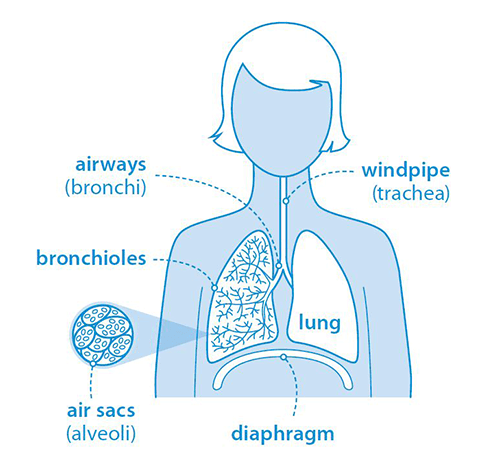OSA stands for obstructive sleep apnoea. It’s a breathing problem that happens when your sleep. On this page find out more about OSA in children.
On this page:
What is OSA?
OSA happens when part of the airway in your child’s throat or nose closes briefly. This obstructs the flow of air, causing their breathing to pause.
Obstructive: there’s an obstruction in the breathing tube in the throat or nose (the upper airway)
Sleep: it happens when your child is asleep
Apnoea: your child’s breathing pauses.

Why does this happen?
When your child goes to sleep, their muscles relax, including those in the throat. In some children, the relaxed muscles cause the airways (tubes) in the throat or nose to narrow or collapse. This can reduce the amount of air that your child can breathe in. This makes them snore and at times pause breathing.
OSA is more common in deep sleep when your child is dreaming (rapid eye movement or REM sleep). This happens more in the second half of the night.
We need to breathe to get oxygen into our blood. When OSA occurs, the level of oxygen in your child’s blood may drop. Their brain will sense this and tell their body to start breathing again. This often comes as a gasp or snort.
OSA can disturb the quality of your child’s sleep. This might cause them to be irritable, drowsy or have poor concentration the next day.
This can affect your child’s:
- behaviour
- general health
- ability to learn.
What causes OSA in children?
There are many different causes of OSA.
Some causes are:
- Having large tonsils and adenoids (areas of tissue at the side and top of the throat)
- Being obese (very overweight)
- Allergies
- Down’s syndrome
- Certain face shapes, such as having a small chin
- Having a narrow or floppy airway
- Rare diseases of the nerves or muscles (for example, muscular dystrophy or cerebral palsy).
How common is OSA in children?
OSA affects up to 4 in every 100 children. Children are more likely to have OSA if other family members have the condition. They’re also more likely to have OSA if they have any of the causes listed above.
Can I prevent my child getting OSA?
You can’t prevent many causes of OSA, but obesity can often be prevented. Help your child stay a healthy weight through exercise and a healthy diet. If your child’s weight is caused by a medical condition, make sure this is well treated. The NHS website has more information on obesity and what to feed young children.
Your doctor or health visitor can also give you tips on diet and exercise.
Can OSA cause any long-term complications?
If left untreated long-term, OSA can affect your child’s general health and wellbeing.
It can cause physical problems such as high blood pressure or changes to heart rhythm in some children.
It can also cause problems with your child’s brain-based skills such as attention, problem solving and memory.
More studies are needed before we can be sure of the long-term risks. But OSA is a treatable condition. Read more about the different treatments for OSA in children.




